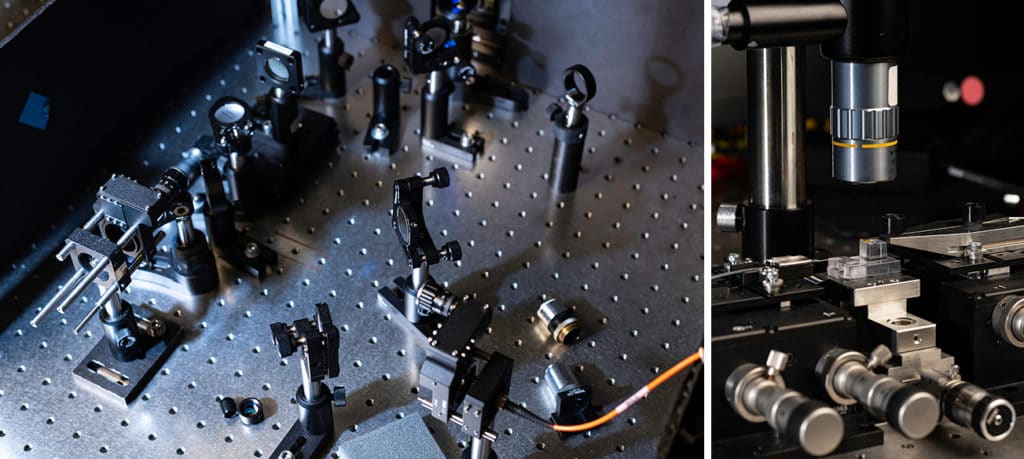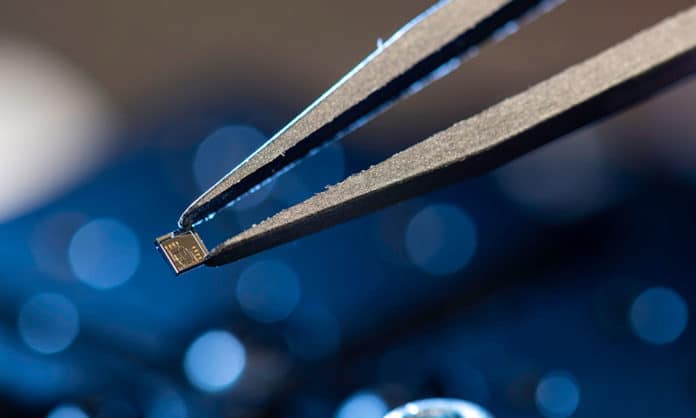Interferometers work by merging two or more sources of light to create an interference pattern. This pattern can be measured and analyzed using an instrument called ‘Interfere-o-meter,’ or interferometer.
The interferometers can offer detailed information about everything they illuminate, from a tiny flaw on a mirror to the dispersion of pollutants in the atmosphere to gravitational patterns in the far reaches of the Universe.
An optical interferometer becomes extremely handy when it comes to measuring something with very high precision.
Now, scientists at the University of Rochester‘s Institute of Optics have created a way to make these optical workhorses even more useful and sensitive. For the first time, they demonstrated an experimental way of amplifying interferometric signals—without a corresponding increase in extraneous, unwanted input, or “noise”—on a 2 mm by 2 mm integrated photonic chip.
In other words, scientists distill novel interferometry into a photonic device.
For this study, scientists studied a theory of weak value amplification with waveguides. They then applied mode analysis in a novel way on free space interferometer with weak value amplification, which bridged the gap between free space and waveguides weak value amplification. Therefore, they proved the theoretical feasibility of integrating weak value amplification on a photonic chip.
Jaime Cardenas, assistant professor of optics at the University of Rochester, said, “Basically, you can think of the weak value amplification technique as giving you amplification for free. It’s not exactly free since you sacrifice power, but it’s almost for free because you can amplify the signal without adding noise—which is a huge deal.”
“Weak value amplification is based on the quantum mechanics of light and involves directing only certain photons that contain the information needed to a detector. The concept has been demonstrated before, but it’s always with a large setup in a lab with a table, a bunch of mirrors, and laser systems, all very painstakingly and carefully aligned.”
“Meeting distilled all of this and put it into a photonic chip. And by having the interferometer on a chip, you can put it on a rocket, or a helicopter, in your phone—wherever you want—and it will never be misaligned.”
To develop the device, scientists used a set of tilted mirrors to bend light and create an interference pattern. It includes a waveguide engineered to propagate the wavefront of an optical field through the chip.
“This is one of the novelties of the paper. No one has talked about wavefront engineering on a photonic chip.”

Cardenas said, “With traditional interferometers, the signal to noise ratio can be increased, resulting in more meaningful input, by simply cranking up the laser power. But there’s a limitation because the traditional detectors used with interferometers can handle only so much laser power before becoming saturated. At this point, the signal to noise ratio can’t be increased.”
The new device removes that limitation by reaching the same interferometer signal with less light at the detectors, leaving room to increase the signal-to-noise ratio by adding laser power.
Cardenas said, “If the same amount of power reaches the detector in Meeting’s weak value device as in a traditional interferometer, Meeting’s device will always have a better signal to noise ratio. This work is cool, really subtle, with a lot of very nice physics and engineering going on in the background.”
Journal Reference:
- Song, M., Steinmetz, J., Zhang, Y. et al. Enhanced on-chip phase measurement by inverse weak value amplification. Nat Commun 12, 6247 (2021). DOI: 10.1038/s41467-021-26522-2
